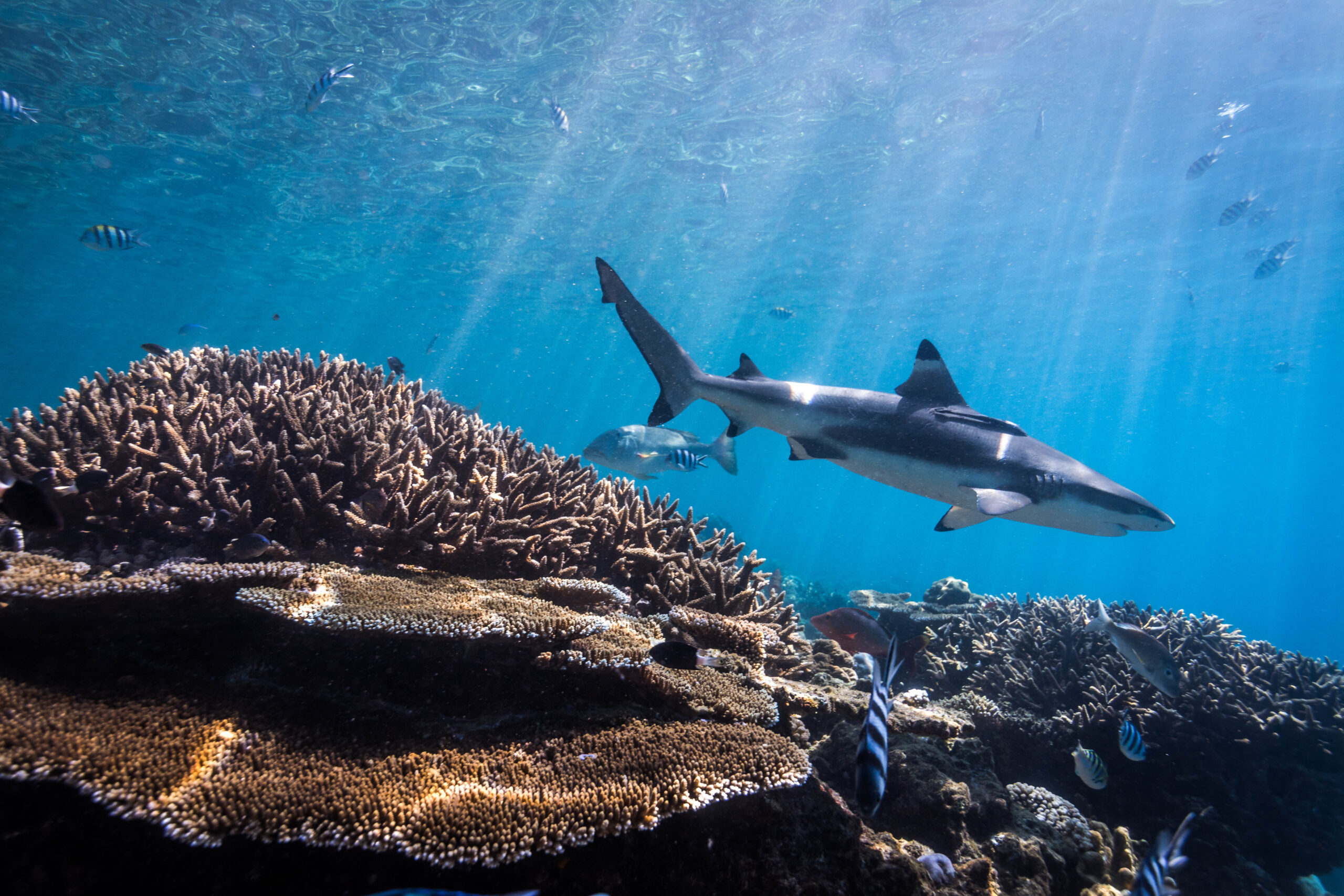In this study, the effects of different herbivore groups (roving herbivores, such as parrotfishes, surgeonfishes and rabbitfishes =”foragers” and territorial damselfish = “farmers”) were isolated by a experiment carried out on a coastal coral reef with high macroalgal cover, high farmer densities and relatively low forager abundance. The effects of foragers and farmers were distinguished by monitoring algal succession on settlement tiles placed inside and outside exclusion cages, inside and outside damselfish territories. Over the course of 12 months, succession on caged tiles outside territories included an early stage dominated by filamentous algae, a later stage with corticated and fleshy macroalgae, which were then replaced by calcified algae. Succession on uncaged tiles inside territories remained dominated by filamentous algae. Thus, farmers had a dramatic impact on succession, essentially stopping the development of the algal community at a point where it was dominated by palatable filamentous algae of the genus Polysiphonia. The relatively strong effects of farmers observed in this study may represent a future scenario for coral reefs that are increasingly subject to overfishing of large grazing fishes
Author: Ceccarelli, D.M., G.P. Jones, and L.J. McCook
Year: 2011
View Full Article
Journal of Experimental Marine Biology and Ecology 339(1): 60-67


